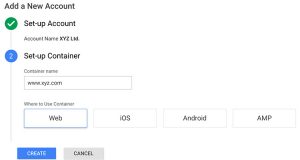
There are lots of ways to encourage customers to submit their feedback, make the process as easy as possible and they’re happy to tell you what they think. Customer feedback is extremely important if you want to develop your business, products, and services in line with their needs, and it’s a great way to gather information for case studies and testimonials to include in other marketing activity.
Keep your feedback form relevant
It may seem obvious, but how many of us receive emails asking for feedback on a service that we didn’t fully experience? If you’re going to target your customers for feedback make sure you’re asking the right questions, as you may start to receive feedback on the relevancy of your email marketing campaigns.
Segment your customers
You will get the most responses from your best, most engaged customers. But usually it isn’t those customers you want to hear from. That’s why segmenting your customers and targeting them with an email and feedback form that’s relevant to them will provide you with more valuable insights.
Make it as easy as possible
How you structure your email and feedback form will depend on what information you need to collect. An online survey with a simple yes/no selection or score rating will suffice if you want to measure the effectiveness of something. If you want detailed feedback on a customer’s experience, then this and a comments box may be appropriate.
Whatever you decide to do, keep it as short and as simple as possible. Make the feedback form too long and there’s a chance they will leave without completing it. The number of click-throughs against form submissions will give you an idea if they started and left without completing.
Incentivise for the best response
Reciprocity is essential if you want something from your customers, there has to be something in it for them too. Whether that’s a discount code, entry into a prize draw or freebie it will always work better than a flat email. This is also a good reason to make sure you are requesting feedback from the right people, as some will complete the form just for the sake of the incentive offered.
Get personal with your customers
Emails sent from people work better than if they’re sent from brands. When a person asks you specifically for your feedback you are more likely to respond, especially if you’re targeted with an email that contains a personal introduction too. By adding personalization you can let the customer know that they have been chosen, the email is intended for them and you value their opinion.
Trigger at the right time
The timing of your email is just as important as its relevancy. By triggering your emails you can request feedback directly after an action, such as an order completion or end of a conversation. Asking them at that moment in time encourages a response while everything is still fresh in the customer’s mind.
Send your customers a gentle reminder
We all have busy lives and sometimes things get missed or forgotten about. It’s a good idea to send a reminder email to encourage your customers to submit their feedback form. By doing so you can increase your response rate and spend time collecting the data, and it might be a good idea to run a split A/B test to experiment with different calls to action and send times to drive engagement.
Digital & Social Articles on Business 2 Community(31)
Report Post






